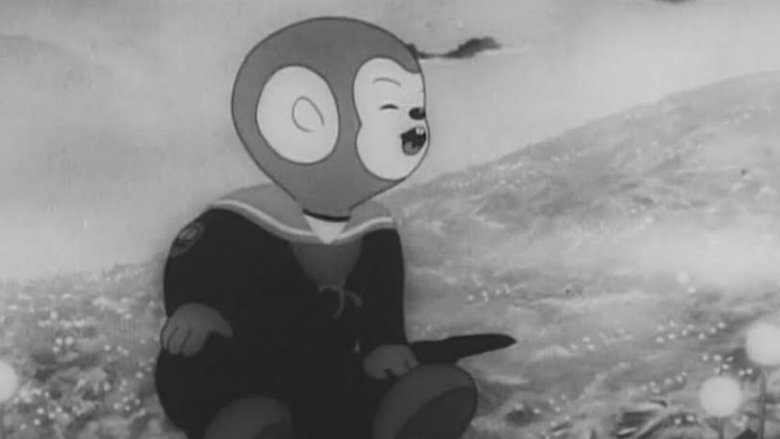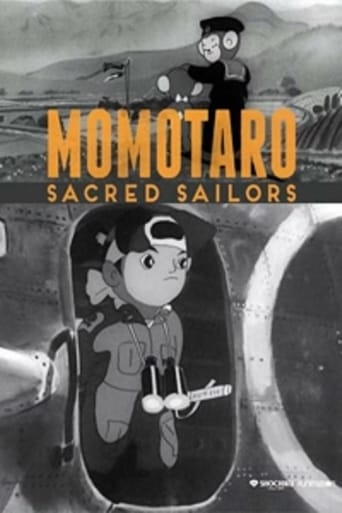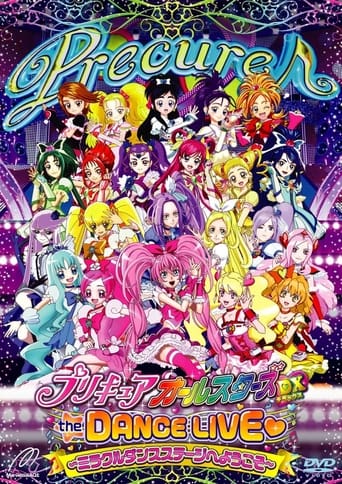Watch Momotaro's Divine Sea Warriors For Free
Momotaro's Divine Sea Warriors
The first Japanese feature-length animated film. It was directed by Mitsuyo Seo, who was ordered to make a propaganda film for the war by the Japanese Naval Ministry. Shochiku Moving Picture Laboratory shot the 74-minute film in 1944 and screened it on April 12, 1945. It is a sequel to Momotarō no Umiwashi, a 37-minute film released in 1943 by the same director. It is black and white. The whole movie also depicts the Japanese "liberation of Asia", as proclaimed by the Government at the time. Seo tried to give dreams to children, as well as to instill the hope for peace, with hidden movie's hints of dreams and hopes, under the appearance of war propaganda.
Watch Trailer
Cast List



Related Movies
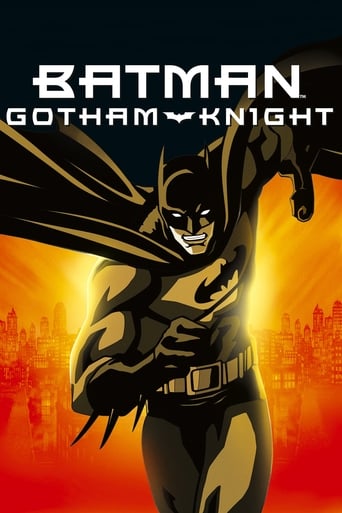 Batman: Gotham Knight
Batman: Gotham Knight
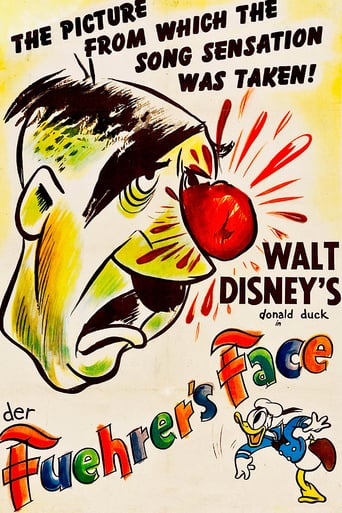 Der Fuehrer's Face
Der Fuehrer's Face
Reviews
Expected more
Although it has its amusing moments, in eneral the plot does not convince.
Exactly the movie you think it is, but not the movie you want it to be.
The movie's not perfect, but it sticks the landing of its message. It was engaging - thrilling at times - and I personally thought it was a great time.
A crude primitive excuse for animation! This film was begun in 1942 and not completed and released until just months before Japan's capitulation. The Japanese had been attempting to perfect animation since the early 30's and by this time still hadn't a clue what the hell they were doing! I have a BG in animation and WWII. This story follows the Momotaro (peach boy) legend but updates it. He's the sole human on his side, yet they fight the Brits who are all human. The animation indicates that while the Japanese tried hard, they were still in the stone age as far as mastering animation. Look at the pans of the L3Y's taking off, look at the character turnarounds! Absolute disaster! In reality the taking of Singapore was accomplished by ground troops. Percival and his staff are laughably portrayed as horned demons as per the Momotaro legend. I think the print has been modified and updated. Only good as a curiosity.
Japan's first full-length animated movie is a World War II propaganda film aimed at children and centred around a young boy Momotaro ("Peach Boy") and his animal friends who represent military sailors. The film's aim is to instill love and loyalty for Japan and belief in its military invincibility and inevitable victory over British and American forces. The importance of the group over the individual is stressed and collective action based on absolute obedience and loyalty is preferred over individual action which the film suggests can cause a person to go astray.What plot exists is very loose and falls into three parts that are related only through shared characters. The film-makers' grasp on history, geography and sociology is precarious. In the first part Momotaro and his sailor friends are on leave and visiting their families. A young child gets lost chasing a runaway sailor cap and its life is in danger. The sailors and others in their community hear a rescue call and rise as one to save the child. In the second part Japanese naval forces take over a tropical island where they are welcomed by the natives who are represented by exotic species of animals; the sailors build an airbase and take time to teach the locals their language and culture. In the third part of the film the Japanese invade islands in Southeast Asia from the air and force the British overlords there to relinquish control. After parachuting to the ground and ambushing a tank together, Momotaro takes charge of negotiating with the Brits while his friends take notes.The animation is very uneven: the main characters of Momotaro and his friends (bear, monkey, cat, pheasant) are drawn well with bodies and limbs in correct chubby proportions. Their faces are usually serene and confident with shining eyes though creepy lipsticked lips don't always synchronise well with speech. Momotaro resembles a plump-cheeked kindergarten-age boy straight out of old Chinese Communist propaganda posters. The animals that represent the Pacific Islanders are all very cute and include creatures not usually native to the Pacific islands: elephants, rhinos, crocodiles, squirrels, bunnies, small wildcats and kangaroos all co-exist happily. Perhaps lacking high-order predators like lions and tigers among them gives the folks that open and hospitable attitude towards the invaders. The animals' portrayal varies from cute and sweet for small critters to rubbery and comic for the crocs and elephants which could have come straight out of old 1930s cartoons. Just as rubbery, dated and definitely caricatured are a trio of three adult monkeys who look and act suspiciously like 1930s blackface minstrels and the British who are shown as lacking in discipline, cowardly and spineless. Against backgrounds that look solid and almost three-dimensional and the fairly detailed depictions of machinery, the variable standard of animation means the film doesn't have a distinctive visual style.Whatever comedy exists in the film seems forced and the songs have been written and played to urge singing along by children. No point in preaching to audiences unless they can be pushed to participate in the message! The film plays hard and fast with the history and geography of Southeast Asia and its colonisation by Europeans. Most likely the islands "freed" by Japan in the third part of the film aren't a specific reference to Singapore but representative for eastern Asia and the western Pacific region. Parts of the plot are cut off unexpectedly and the film never returns to them. At the end of the film various small animals practise parachute-jumping onto a map of North America; the implied message is that Japanese domination of the entire Pacific region and beyond is the next step. Given that when the film was released Japan had already been retreating from US-led forces for two years, and the country was in dire economic as well as military straits, the message is desperate and shrill.Viewers may note the tone of the whole film can be strident: the pace is steady and fast, the story trajectory is onwards and upwards, and the animals obey orders and act promptly and efficiently without hesitation. The portrayal of some animals as rabbits has an unintended and slightly amusing suggestion of cloned conformity especially in scenes where they prepare the airfield for military planes to land and to take off with almost preprogrammed foreknowledge. A message of unquestioned obedience with one's heart, mind and soul being at the service of the nation, its government and emperor is strong. Characters might pause only to look at photographs of loved ones and realise how much they miss their families but that's the only kind of reflection and character development allowed here.Not a film I'd recommend for children until they're of an age to understand how seductive and inviting propaganda can be and the different forms it can take to persuade people to adopt particular beliefs and actions.
A typical WWII propaganda film. I think the film is really only of interest to historians who are want some insight into Japanese propaganda. I don't think much more needs to be said on that. The animation is a good technical achievement. However, there is a lot more to a film then how good technically it is. The animal protagonist and friends are cute until you realize the underlying brainwashing attempt aimed at the Japanese children. Then the characters lose a lot of their cuteness and seem more diabolical.The film glorifies the war against the noodle armed stuttering westerners. Who by 1945 were far from running around in circles yelping and surrendering. But I digress.I found the ending where the animals are practicing their parachute jumping on the map of the U.S.A. sadly optimistic. Just shows how out of reality the Japanese military was considering the disastrous state of the war. But that is par for the course in propaganda. It reminds me of Dr. Goebbles radio broadcasts encouraging the German people to rise up and throw back the Russian subhumans from hallowed German lands.I wonder how many children saw this film died shortly after in the atomic bombings? I think that is what you should remember if you watch this film. War is sometimes necessary, but it can be awfully cruel. Putting a happy furry cute face on it doesn't change that.Not a recommended film for somebody to watch for enjoyment. If you have any knowledge of the suffering WWII brought to the world, I think it is impossible.
This is film was not a "first" in any strict sense. It was the second feature-length animated film made in Japan. The first was made by the same director in 1943, and featured the same character, the brave and powerful "Peach Boy" of Japanese folklore. But this film was far better than Seo's earlier effort, and, although it was a box office flop (It was made for children, but Japan's urban children had all been evacuated to the countryside at the time!), it was enormously influential, and inspired the young cartoonist/ physician TEZUKA Osamu to become an animator. Like it predecessor, it is a war propaganda film, and for that reason is both disturbing and laughable, but Seo must be given credit for his masterful direction and animation. The title, by the way, translates as "Peach Boy: Divine Warrior of the Sea." A final aside: Seo was an apprentice of MASAOKA Kenzô, who created the brilliant Kumo to chuurippu ("The Spider and the Tulip") in 1943.
